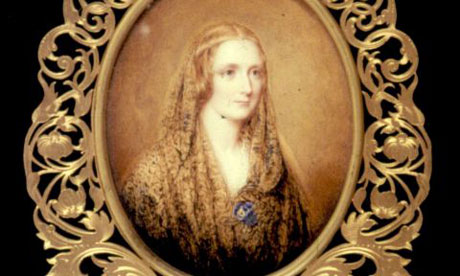An enormous amount of content was produced by and about women in horror during Women in Horror Month, 2014. I linked to a lot of this content via our Facebook page However, since a lot of people don’t visit our Facebook page, I’m going to provide a list of links to places I visited and shared during the month that are related to WiHM(I really recommend that you visit there often, because not only will you get all kinds of awesome content that comes my way, but there are also links to all our blog posts– not just this blog, but the one for Reading Bites, and the one that notifies you of new reviews. So it’s a great way to see everything current).
Enjoy!
Mary Shelley Letters Discovered in Essex Archive-– The Guardian, January 15
Flowers in the Attic: The Value of Young Reading Perspectives-– Kelly Jensen, BookRiot
The Ghost of V.C. Andrews: The Life, Death, and Afterlife of the Mysterious “Flowers in the Attic” Author— Kate Aurthur at Buzzfeed. For the first time, the family and colleagues of the author speak out to provide a fuller picture of her life.
The Literary Gothic— A web guide to biographical information on early supernaturalist authors, set to close down in June
Please Don’t Bring Me Flowers— Allison Peters, BookRiot
20 Black Women in Horror Writing— Sumiko Saulson. Essential reading for the month of February, for multiple reasons. Saulson also published a short ebook on black women horror writers in February of this year, available for free at Smashwords.
Women in Horror Recognition Month Facebook page
Gothic Pioneer Ann Radcliffe May Have Been Inspired by Mother-In-Law— The Guardian, January 30
Women Who Write Lovecraft by Silvia Moreno Garcia of Innsmouth Press
RA for All: Horror— Becky Siegel Spratford asks who your favorite woman writer in horror is.
Ania Ahlborn’s interview with J. Lincoln Fenn
The Rise of the Women in Horror Movement: Admirers, Haters, and Everything In-Betweeners at Brutal as Hell
Statistics on genre writer submissions by gender at Tor UK, by editor Julie Crisp. Crisp’s statistics demonstrated that women submit fewer manuscripts than men, at least at Tor UK, so sexism by the publisher isn’t the only factor at play.
Women in Horror Month: Girls Can Kill, Too!— Bloody Disgusting
Writing female protagonists, by Lisa Morton– HWA blog
Genre-blending from Mary Shelley to the present by J. Lincoln Fenn– HWA blog
Horror Roundtable on Sexism— HWA discussion. Read the comments section– it’s very interesting!
Women Destroy Science Fiction Kickstarter— Lightspeed Magazine. In spite of everyone’s insistence that all-women issues are not desirable, this Kickstarter campaign to fund an all-women writers’ issue of Lightspeed Magazine was so successful that the people at Lightspeed expanded to include issues called Women Destroy Horror (published as an issue of Nightmare Magazine) and Women Destroy Fantasy (published as an issue of Fantasy Magazine). The campaign is over, but this shows there is clearly a demand for work by women writers. Look for the special issues later this year!
Mary SanGiovanni on her personal experiences as a woman writer of horror.
Creating female protagonists, by Lisa Morton (again, although not the same piece)– RA for All: Horror
Women in Horror Month: Pseudonyms and Author Anxiety— KC Redding-Gonzalez
Rabble Rouser Wednesdays: On the Issue of Misogynist Writers and Readers by Paula Ashe
Mark Coker responds to Hugh Howey
Tonia Brown on her personal experience with self-publishing
What’s Wrong With Female Werewolves in Popular Culture? at Darkmedia
Women in Horror Month Archives 2014— Darkmedia
Spreading the Writer’s Word— A daily spotlight on a book by a woman writer of horror
Siren’s Call Publications— download their free ezine devoted to Women in Horror Month
60 Black Women in Horror by Sumiko Saulson— free download to this guide at Smashwords.
There is some great stuff at those links and I hope you will take the time to explore them. I hope you had a great time learning about women in horror, and especially women in horror fiction, during the month of February. Don’t think that just because the month is up that it’s time to stop, though! Keep your eyes open for news on how Monster Librarian plans to keep women writers visible over the next several months– it will be a challenge to keep it up with the Stokers coming up and all kinds of reviews to edit, write, and share, but it’s totally worth it. So welcome to March– another month set aside to recognize women’s contributions to the world. Let’s see where it takes us!






Follow Us!